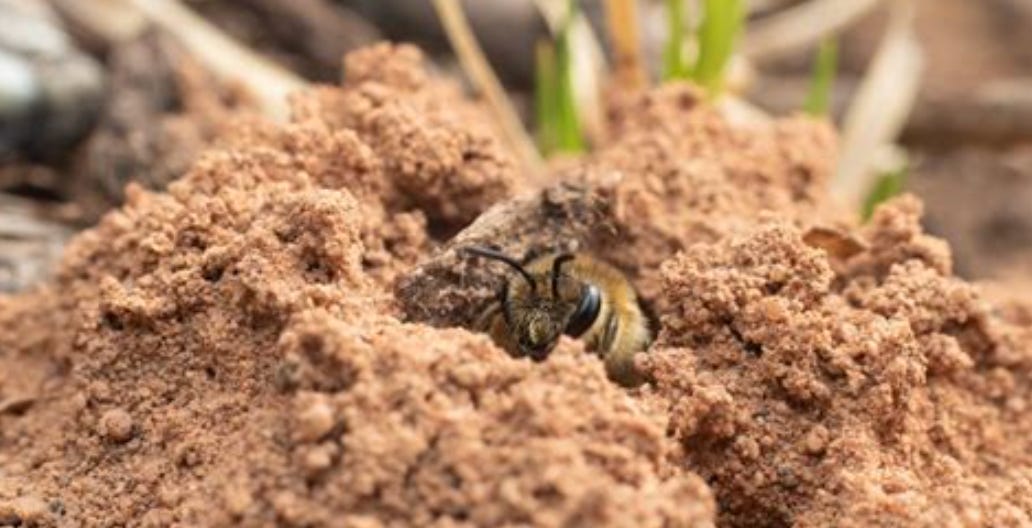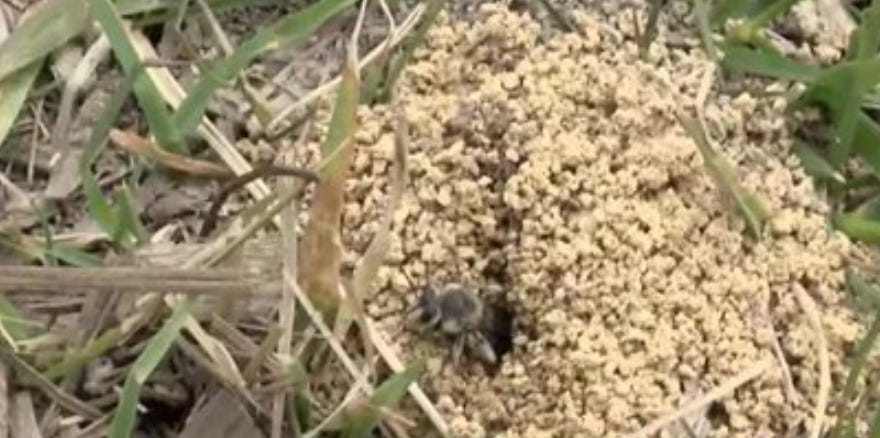Painful Stings to a Southern Vermont Dog Serve as a Reminder of Active Fall Bees
"They were all over, under her harness and collar, etc. I swatted away as many as I could while running back towards the house."
At the end of August a social media post went out from Theresa in southern Vermont who set out for her regular walk with her two dogs. The loop through the brushy edge of a field seemed ordinary enough — until one pup stirred up a nest in the ground.
Within moments, she was stung several times and her dog was swarmed, yellowjackets crawling under its harness and collar, stinging repeatedly. A frantic sprint home, emergency doses of Benadryl, and a quick trip to the vet — complete with a steroid injection — spared the pup from lasting harm.
But the experience underscored just how easy it is to stumble onto a nest in late summer, and how suddenly a peaceful walk can turn into a dangerous encounter.
As summer gives way to fall, Vermonters often notice an uptick in buzzing activity around the yard, garden, or even picnic table. Small holes in the soil may mark the entrances of ground-nesting bees, while swarms near garbage cans or apple drops often point to yellowjackets. With September being the peak season for both kinds of insects, knowing which is which can mean the difference between appreciating pollinators and avoiding painful stings.
Solitary Bees: Harmless Pollinators in the Soil

The majority of Vermont’s “ground bees” are solitary species such as sweat bees (Lasioglossum), mining bees (Andrena), and digger bees. These pollinators dig pencil-sized holes in bare soil or sandy banks. Their colonies are not social; each female digs her own nest.
According to the University of Vermont Extension, these bees are extremely docile. Females can sting, but rarely do unless handled, and males cannot sting at all. In September, they are busy foraging on goldenrod and asters before dying off for the season, while their offspring remain underground to overwinter.
Key signs you’re looking at solitary bees:
Small, tidy soil mounds with round entry holes.
Individual bees coming and going rather than a swarm.
Activity focused around flowers, not human food.
Bumble Bees: Social but Not Aggressive Unless Disturbed

Some bumble bee species in Vermont also nest in the ground, often in old rodent burrows. Their colonies peak in late summer, and by September most of the workers are dying out as new queens prepare to overwinter.
Bumble bees are generally gentle and will not sting unless their nest is directly disturbed. They are key pollinators of both wildflowers and crops, including clover and tomatoes.
Yellowjackets: The Real September Stingers

The insects most Vermonters encounter aggressively in September are not bees at all but yellowjackets, a type of wasp. These ground-nesting wasps build papery combs in underground cavities and can reach thousands of workers by late summer.
According to the Vermont Agency of Agriculture, yellowjackets are highly defensive of their nests and are also more likely to hover around outdoor meals, garbage, and orchards as natural food becomes scarce. Unlike bees, which die after stinging, yellowjackets can sting repeatedly.
How to recognize yellowjackets:
Black and bright yellow banded bodies with a shiny, wasp-like appearance.
Quick, darting flight patterns rather than the slower, fuzzier look of bees.
Strong attraction to soda cans, meat, and sweets in addition to flowers.
Why Encounters Increase in September
Colony size peaks for both bumble bees and yellowjackets in late summer.
Food scarcity drives yellowjackets toward human activity.
Seasonal overlap: solitary bees are still foraging while wasp colonies are at their hungriest.
What Vermonters Can Do
Appreciate and protect solitary bees. Leave patches of bare soil and fall flowers for them; they rarely sting.
Give bumble bees space. If you find a nest in the ground, avoid mowing or disturbing the area until frost ends the colony’s cycle.
Be cautious with yellowjackets. Cover food outdoors, keep trash sealed, and call a professional if a nest is in a high-traffic area.
Bottom Line
In September, Vermont’s ground-nesting bees are wrapping up their quiet, essential work as pollinators, while yellowjackets are making their presence loudly felt. With a little observation, residents can tell the difference — and avoid unfairly blaming gentle bees for the bad behavior of wasps.




Between the yellow jackets and the flying ants that emerge in the late afternoon, it can be a bit unpleasant to enjoy the outdoors.